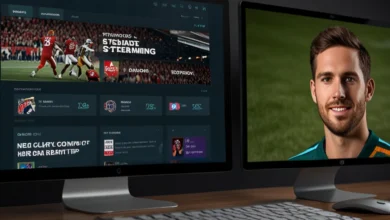Vocational Education Committee A Modern Governance Guide

A Vocational Education Committee (VEC) is traditionally a local statutory body tasked with overseeing vocational and technical education within a region. Originating in Ireland through the Vocational Education Act of 1930, VECs guided schools, adult education, and trade training for decades. They were composed of local officials, educators, business interests, and parents, tasked with administering secondary vocational schools and adult literacy programs.
Table of contents
- From VECs to Education & Training Boards
- Composition, Roles, and Accountability
- Missing Pieces What Most Descriptions Overlook
- Why It Matters Today
- Key Functions of Contemporary Vocational Education Committee
- Bridging Gaps with Innovation
- Real-World Benefits of Strengthened Vocational Governance
- Conclusion
- FAQs
From VECs to Education & Training Boards
In 2013, Ireland replaced VECs with Education and Training Boards (ETBs) to consolidate resources, reduce costs, and broaden functions. ETBs now manage secondary schools, further education colleges, and vocational training centres under a unified governance model. This transformation addressed administrative inefficiencies, but it also created gaps—in public awareness, digital transition, and strategic workforce alignment.
Composition, Roles, and Accountability
A typical VEC or ETB board includes elected local representatives, educators, community leaders, and industry stakeholders. Their core role is shaping vocational education to meet local labor market needs. Initially, VECs established vocational schools and literacy programs; today’s ETBs also deliver apprenticeships, post-secondary education, and ongoing professional development.
However, many public-facing materials lack transparency on how these bodies evaluate their effectiveness. Without clear metrics such as student outcomes, employer satisfaction, and technological readiness their impact remains opaque to taxpayers and learners.
Missing Pieces What Most Descriptions Overlook
While existing sources cover historical duties and structural shifts, several critical areas are largely absent:
- Outcome Metrics: Few VEC/ETB sites share data on graduate employment, certification rates, or post-training career paths.
- Digital Integration: The rapid digitization of vocational skills automation, online learning, cloud platforms is rarely addressed.
- Industry Co-Creation: Although committees claim industry representation, they seldom detail how they collaborate with businesses to constantly update curricula.
- Global Comparisons: There is little discussion of how Ireland’s model compares to dynamic, demand-responsive systems in countries like Germany, Australia, or Canada.
Why It Matters Today
Vocational education is central to addressing future workforce needs amid global shifts in automation, the green economy, and digital tools. Effective governance through VECs or ETBs is crucial—but only if they evolve with the times and remain accountable to students, employers, and communities.
Key Functions of Contemporary Vocational Education Committee
- Oversee the development and approval of vocational training programs aligned with emerging industry needs
- Assess local labor demand and guide institutional planning for skills and workforce alignment
- Choose and authorize expert members—including employer and teacher representatives—for curriculum oversight
- Create sub‑committees for specialized disciplines such as IT, healthcare, agriculture, and digital skills
- Implement performance monitoring—tracking job placement rates, accreditation success, technology readiness, and graduate feedback
- Facilitate transparent communication and accountability through published performance and impact reports
- Promote digital infrastructure: integrate online learning platforms and tools to reflect technological advancement in vocational fields
Bridging Gaps with Innovation
A forward-looking Vocational Education Committee could incorporate features missing from many current implementations:
- Introduce Dashboard Reporting: Publicly share data on student outcomes, job placement, and enrolment trends.
- Embed Industry Advisory Panels: Engage with employers in real-time to predict emerging skill gaps.
- Expand Digital Training: Include programs like cybersecurity, digital fabrication, AI, and cloud-based tools.
- Benchmark Globally: Analyze governance models from other countries to identify replicable best practices.
Also read related article Educators Handbook Complete Guide
By including these elements, VECs or ETBs can evolve from administrative bodies into engines of meaningful economic and social impact.
Real-World Benefits of Strengthened Vocational Governance
Enhanced committees can yield measurable benefits: higher employment rates for graduates, stronger employer satisfaction, faster adaptation to technological shifts, and improved student engagement. These outcomes not only validate public investment but also reinforce vocational education as a respected path reducing stigma and boosting access to skilled careers.
Conclusion
A Vocational Education Committee should not merely manage schools; it must evolve into a strategic body that shapes responsive, industry-aligned, and future-ready vocational training. By adding transparent outcome reporting, digital learning integration, and proactive industry partnerships, these committees can restore vocational education as a respected and effective path to real-world opportunity. The future of work depends on governance that adapts are our committees ready?
FAQs
Q1: What replaced Vocational Education Committees in Ireland?
They were replaced in 2013 by Education and Training Boards, which continue VEC functions along with broader vocational and educational responsibilities.
Q2: Who serves on a vocational education committee?
Members typically include elected local officials, education experts, employer representatives, labor delegates, and parents, all appointed to ensure diverse oversight.
Q3: How can committees stay responsive to industry changes?
By forming industry advisory groups, holding regular local labor-demand assessments, and updating programs yearly based on employer feedback.
Q4: Why is performance transparency important?
Sharing outcome data helps students make informed choices, reassures taxpayers, informs workforce policy, and supports improvements in vocational offerings.




